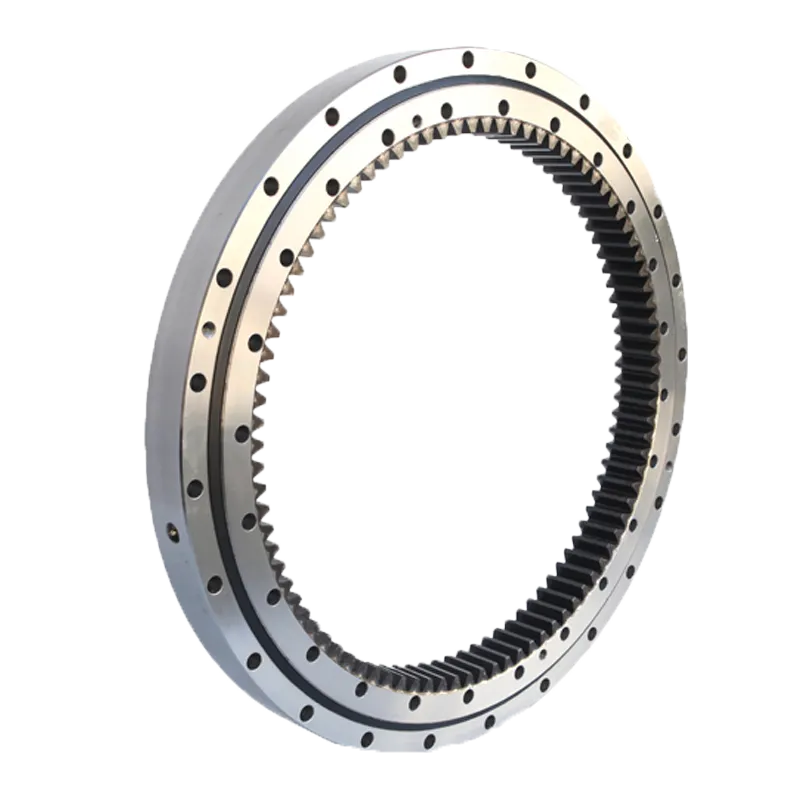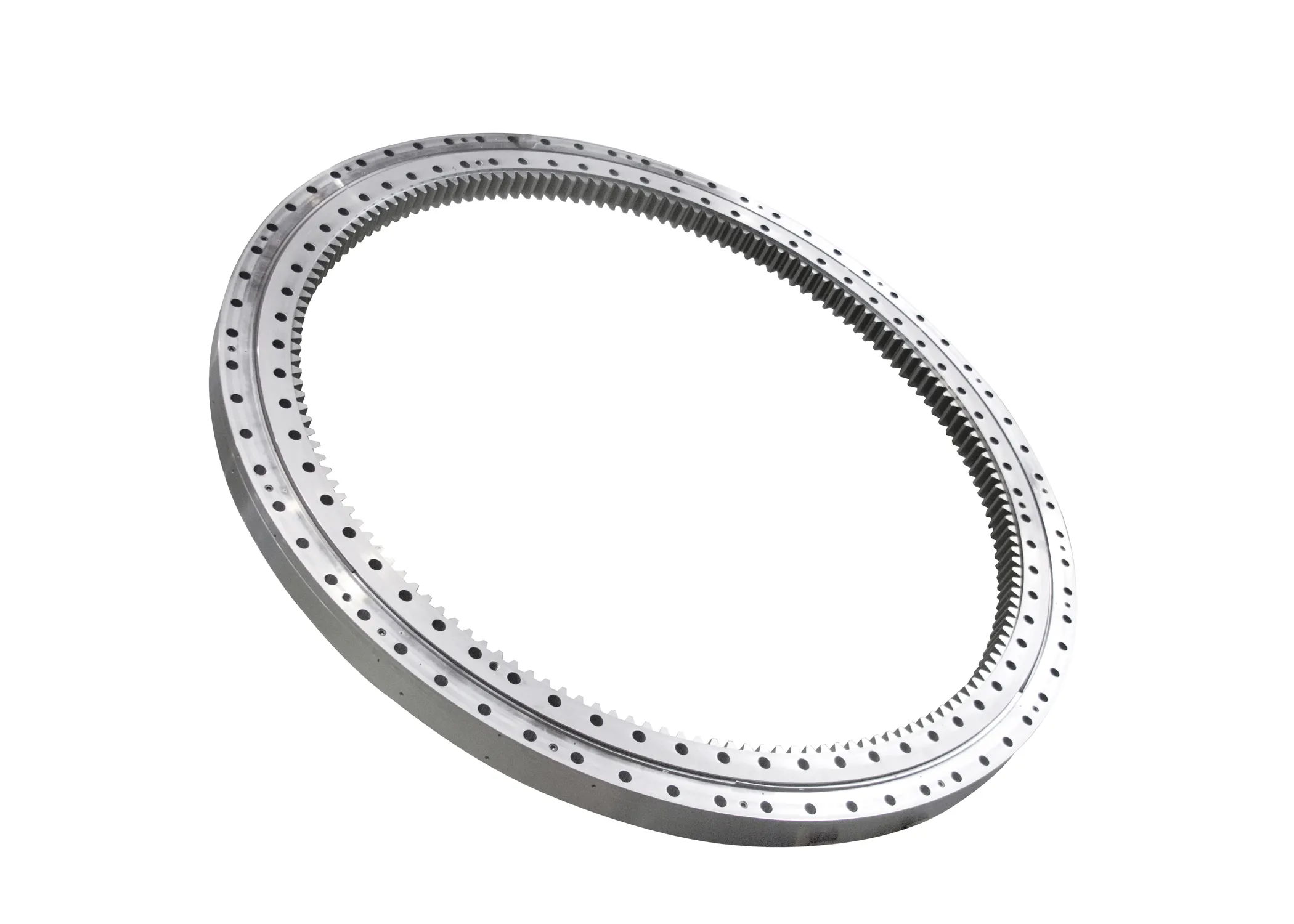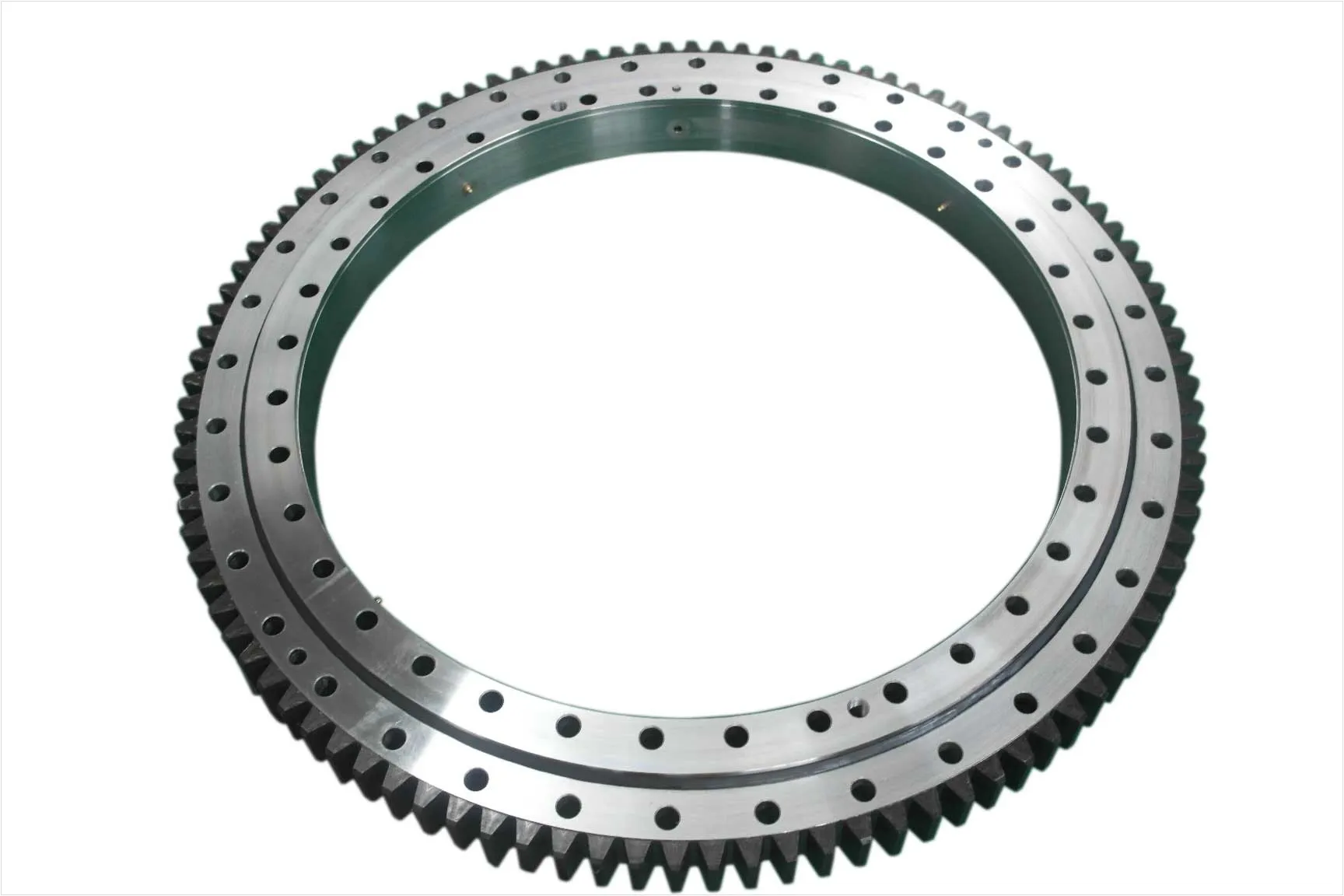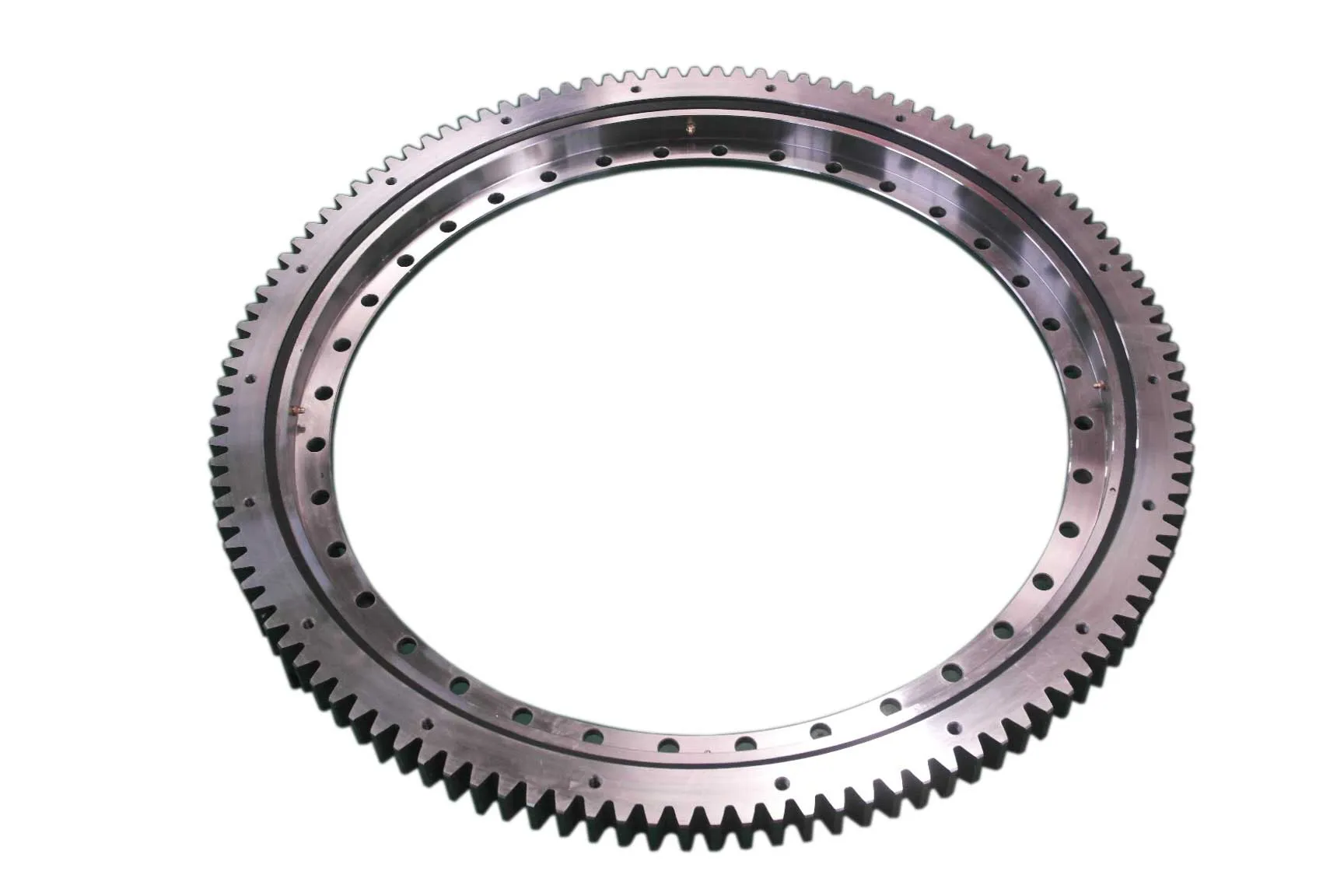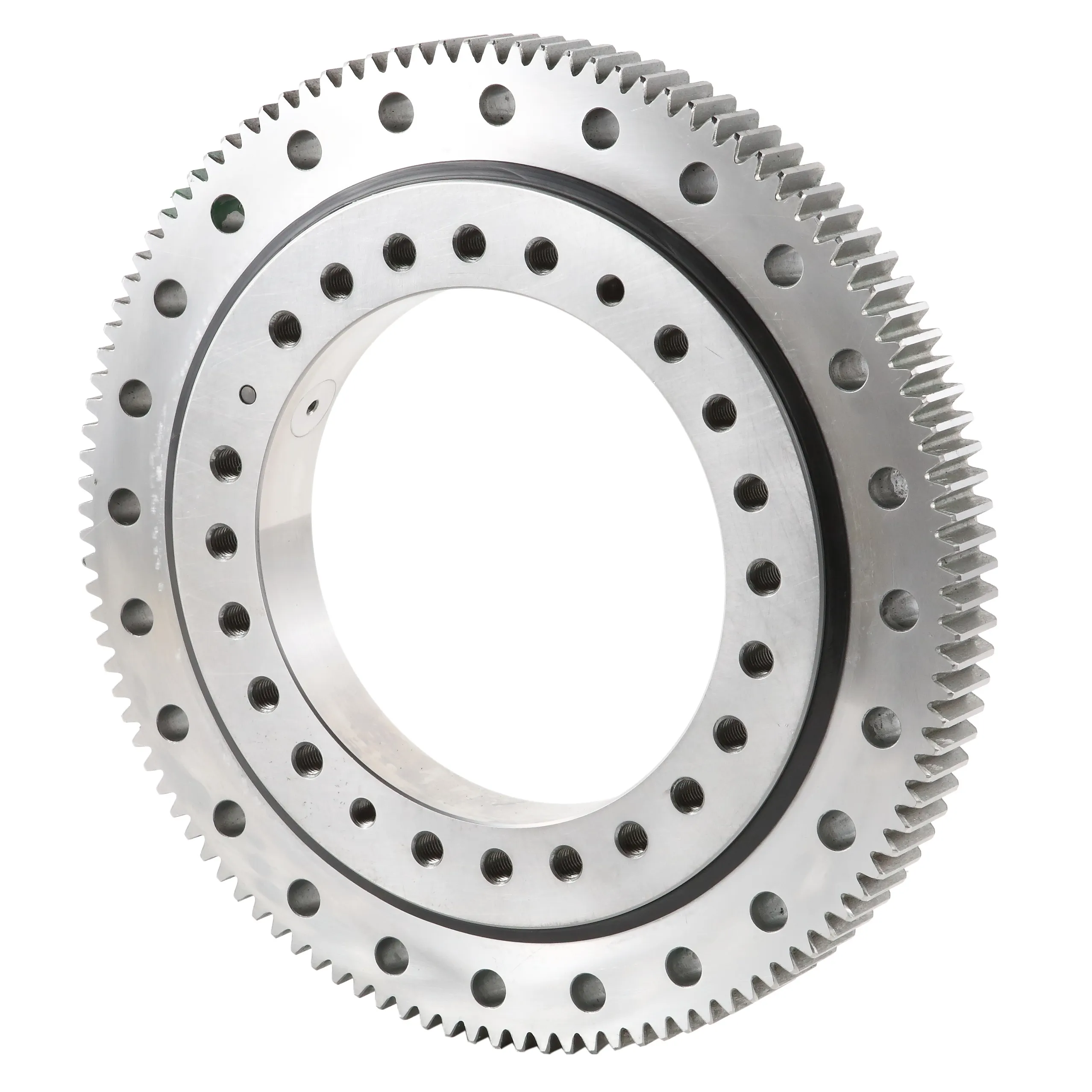Slewing Bearing
Slewing bearings, as they are more commonly described, are used inside a machine or system when it is necessary to guide the rotary motion of one part in relation to another. A slewing bearing must guarantee support for the required loads with maximum rigidity within the precision range appropriate to the application, comply with operating parameters and offer a service lifetime compatible with the lifetime of the machinery to which it is fitted.
Three Ways to Drive a Slewing Ring Bearing
Designed similar to ball bearings, slewing ring bearings are used in rotating and turntable applications. The success of the slew ring bearings correlates to how the system is driven.
Slewing bearings are comprised of an inner and an outer ring, one of which incorporates a gear. Three ways to drive this type of bearing include external gear, external belt, and drive-plate coupling.
Internal & External gear
Most slewing ring manufacturers offer a geared option. The mating gear for any slew ring should be made of a softer material than the actual gear itself.
External belt
Belts come in various widths and the ability to withstand pounds of tension.
Drive-plate coupling
A drive-plate coupling connects to a motor assembled directly to the slewing ring.
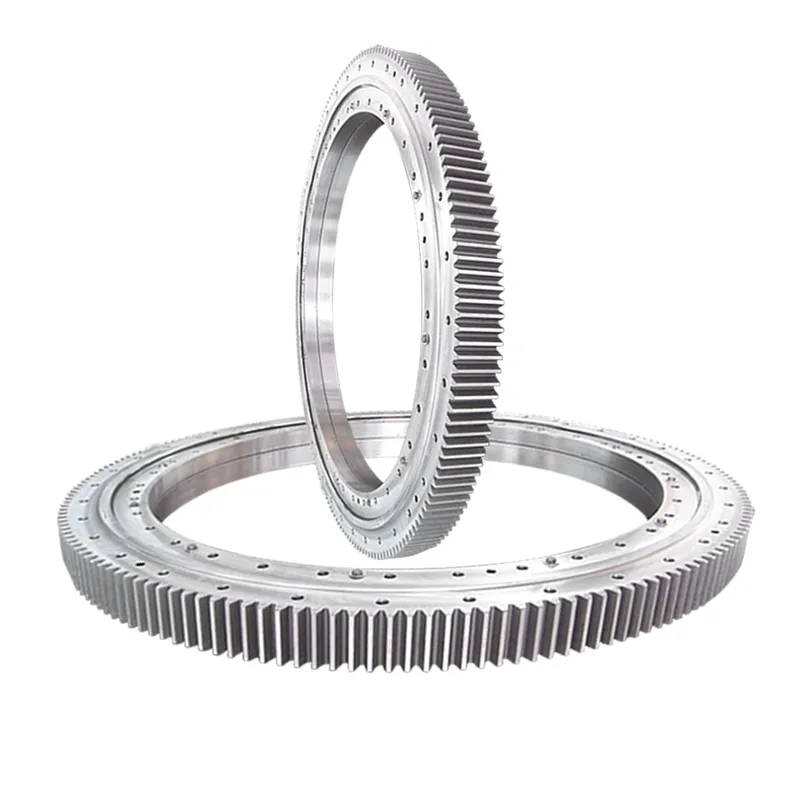
Application Slewing Ring Bearings With Internal Gear
- A slewing ring bearing with internal gear is used in various rotating machines with or without eccentric loads.
- The Torriani internal geared slewing ring is widely used in demolition and sorting grabs, cranes packaging industry, transport industry and agricultural machines.
Structure Of A Slewing Bearing
These bearings consist of two concentric rings, one of which incorporates a gear. These bearings are able to bear axial and radial loads as well as overturning torque.
They can be driven by an external gear, external belt, or drive-plate coupling. They can also be driven by an internal gear on one of the ring’s outer sides.
Products
%
Precise
Years
More About Slewing Bearing
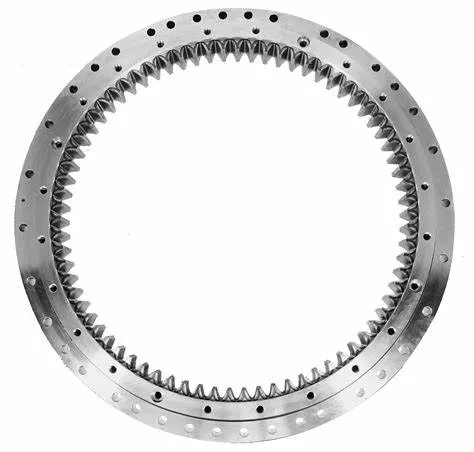
Maintenance
The Maintenance Of A Slewing Bearing
Large-diameter bearings – especially slewing ring bearings – handle complex loads in heavy-duty rotating equipment such as cranes, earth excavators and tunnel boring machines. They must handle combinations of thrust, radial and tilting moment loading.
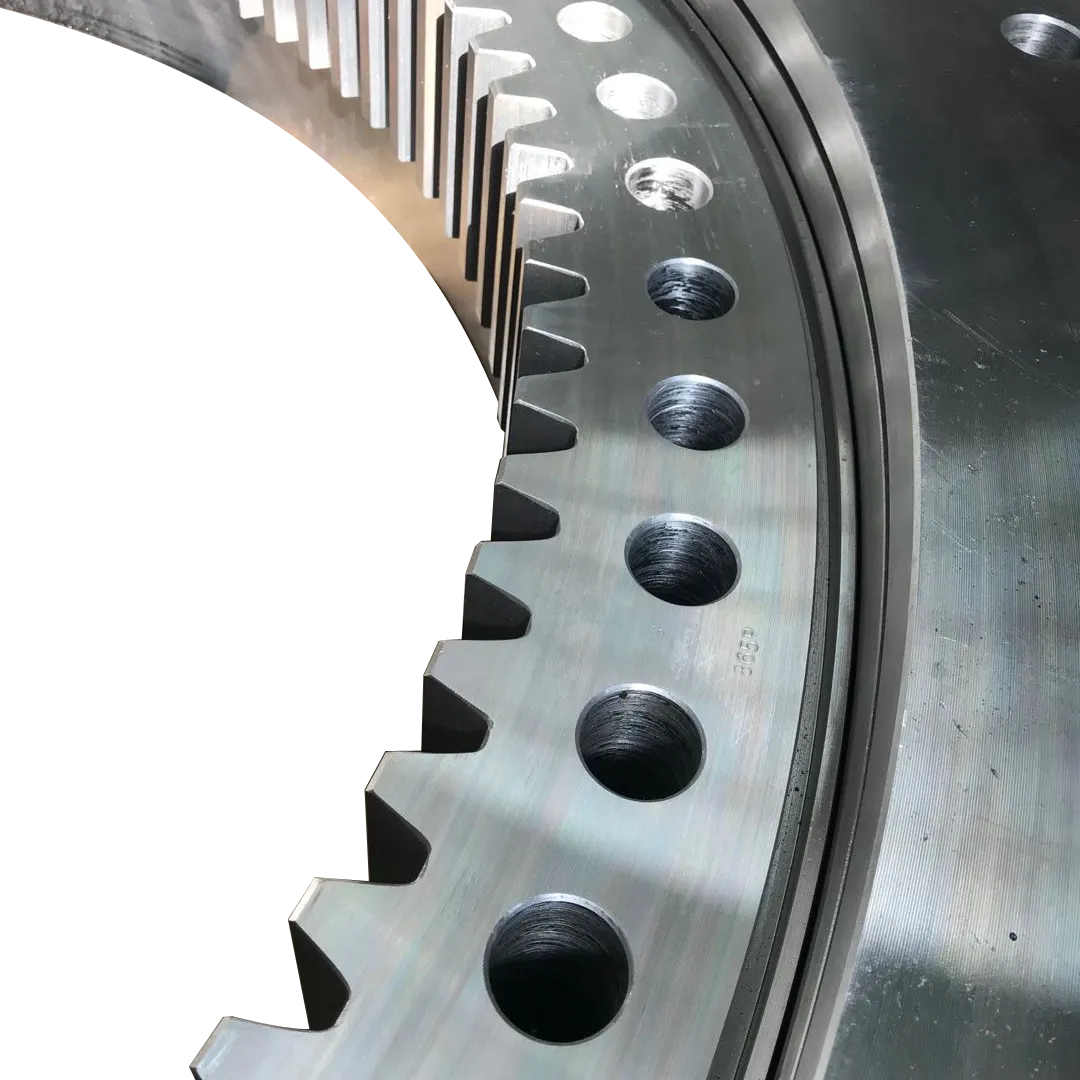
Function
The Function Of A Slewing Bearing
A slewing bearing or rotary bearing is an important mechanical component used to enable rotation between different parts. They are used in large-scale slewing devices such as lifting and transportation machinery, mining machines, construction equipment, port machinery and wind turbines.
